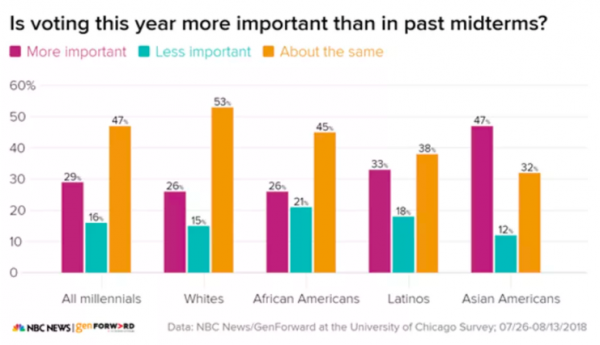
Democrats have plenty of reasons to be optimistic in the 2018 midterms: President Trump is unpopular, they hold a strong lead in indicators like the generic congressional ballot, and they have pulled off shocking upsets in special elections over the past two years in places like Alabama and rural Pennsylvania.
But there is a dark side to those promising omens: Democrats have also fallen short in several special elections that were teed up as the kind of race they would need to win to take back the House majority. In the Georgia Sixth to replace Tom Price and the Ohio 12th to replace Pat Tiberi in particular, Democrats outperformed the district’s partisan lean and its Republican voting history but still couldn’t find quite enough votes to win.
For every Pennsylvania 18th, the site of Conor Lamb’s stunning win in a district Donald Trump had won by 18 points, there is an Arizona Eighth. Democrat Hiral Tipirneni came within 3 points of beating Republican Debbie Lesko in a district Trump won by 23.
So Democrats came much closer than you’d think to winning a coveted House seat. But they still lost. They’ve actually lost a lot over the past two years, including in the Ohio 12th special election last month. Of course, Republicans haven’t really been impressive either, as they scrape by in what were supposed to be solid GOP districts.
But to state the overly obvious, you have to actually win in close elections to take at least 218 seats and control of the House. While these special elections are often held up as proof that a blue wave is building, they remind us exactly how big that wave has to be. Republicans have successfully gerrymandered House districts across the country expressly for this purpose: surviving a year of strong Democratic enthusiasm.
This year might be the first when those maps are really put to the test — but in a few choice cases already, the strong Republican fundamentals have held up. If they can swing just a few seats in November, that might be enough for the GOP to hold on to the House.
The worst fears for Democrats in the 2018 midterms, explained
The special elections in the Georgia Sixth, where Democrat Jon Ossoff lost to Republican Karen Handel last April, and in the Ohio 12th, where Democrat Danny O’Connor fell short against Republican Troy Balderson in August, represent two distinct danger zones for Democrats.
The Georgia race typified a district that swung dramatically toward Democrats in the 2016 presidential election. Mitt Romney beat Barack Obama by more than 20 points in the Sixth in 2012, but Trump barely edged out Hillary Clinton, winning the district by less than 2 points.
That swing and strong fundraising by Ossoff gave Democrats hope they could flip the seat after Tom Price vacated his seat to become Trump’s health secretary. Forecasters rated the special election a toss-up. But while the Sixth continued its swing toward Democrats — Price won his last reelection in 2016 by 24 points, and Handel beat Ossoff by just 6 — it wasn’t enough to overcome the district’s red bent.
The Ohio 12th represents a different kind of challenge. The district didn’t swing at all in 2016 (Romney beat Obama by 10 points, Trump beat Clinton by 11), but the demographics of the district promised to make it more competitive. The 12th is better educated than the rest of the country and than Ohio as a whole, and Democrats hope that well-educated, suburban, Republican-leaning voters who are dissatisfied with Trump can be an important cohort for them this year.
O’Connor did have a much stronger showing than Democrats typically do there (the Democrat got less than 30 percent of the vote in 2016’s House election), but he still lost to Balderson, by a single point. Other special elections have been more competitive thanks to diverse electorates — the Arizona Eighth and the South Carolina Fifth, a Trump+18 district that Republicans won by just 3 points last summer — but the GOP-leaning nature of the district won out.
The fear for Democrats, in other words, is “you don’t get close enough to win in those high-educated districts and the Obama-to-Trump places don’t bounce back enough,” Kyle Kondik at the University of Virginia’s Crystal Ball told me in an email. “So you get squeezed at both ends, basically.”
Democrats have been playing in pretty difficult territory: The Georgia Sixth is R+8, according to Cook Political Report, which means it’s 8 points more Republican than the rest of the United States; the Ohio 12th, Arizona Eighth, and South Carolina Fifth are all R+7 or worse for Democrats. So close calls on that kind of turf can certainly be seen as encouraging for the minority.
But Democrats will probably need to take some R+7 districts to win the 24 seats they need to flip the House. Come up just short in just a few too many of those races in November and Republicans will hold on to the gavel next year.
The other fear: Democratic voters don’t show up
The battlefield itself is part of 2018’s challenge for Democrats: The map is tilted toward Republicans. Democrats need to overperform to compete when a district’s voters are 8 points more Republican than the country as a whole. We’ve seen they can have a strong showing and still fall short.
But the other, related fear is that Democratic voters simply won’t show up. The party is putting a lot of faith in young, diverse, progressive candidates to motivate their base, not to mention antipathy toward President Trump. But Democrats have the bigger lift: While older, whiter Republican voters might be a shrinking share of the populace, they reliably turn out to vote every midterm.
Younger, nonwhite voters have historically been much less dependable. Some surveys this year have already revealed warnings signs for Democrats. Younger voters do not seem to feel an overwhelming sense of urgency this year. In some of these tightly contested seats that Democrats are trying to flip, just a handful of those voters staying home could be the difference, and 29 percent of millennial voters say they feel the 2018 midterms are any more important than past elections.

As Vox’s Tara Golshan previously reported:
Democrats have history, public sentiment, and some choice special election wins on their side heading into November. But some of the less remembered results over the past two years, where there was fleeting excitement about potential Democratic upsets that didn’t pay off, should sound a warning for the party: Victory is not guaranteed.
Sourse: breakingnews.ie
0.00 (0%) 0 votes


































